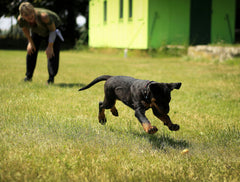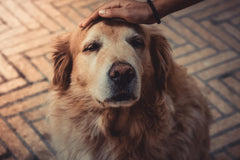
Spaying a dog is a sometimes painful but necessary medical procedure for your pet. However, it's also one of the essential ones that you can do. Every year, sadly, approximately 1.5 million shelter animals are euthanized in the United States. While that number has been on the decline, it's still relatively high. By having your dog spayed (and providing care after spaying a dog), you'll help reduce the pet population and keep the shelter numbers down.
Despite some of the apparent benefits of spaying a dog, some people are reluctant to do so. Many times, they're unsure of how to provide their pet with the best care after. Here are five tips for giving the best care after spaying a dog.
Be Supportive and Comforting to Provide Care After Spaying a Dog
Your dog will be experiencing some unpleasant feelings after the surgery happens. The first place to start when it comes time for providing care for your beloved pet is being comforting and supporting. Please provide them with a safe, quiet space at home to recover. If your dog doesn't feel like playing fetch for a couple of days, give them space and the ability to decline.
Your dog will not only potentially be feeling discomfort from the surgery, but they'll also be feeling the effects of the anesthesia. Sometimes that can make them tired for a little while. Therefore, if you see dilated pupils or lack of appetite, know that these reactions are normal. Again, the best you can do is try to be supportive and give them appropriate attention and affection.
Check the Incision and Look for Complications
You should check the incision and look for potential complications every day for a week or two after the surgery. You should call the vet if you notice any infections, bleeding, or other problems.
If you're spaying a dog in heat, you should know that there is a slightly increased risk of bleeding and other surgical issues. Most vets try not to spay a dog that's going through this process, but if your vet does, you should be extra careful about looking for potential issues.
Keep Your Dog From Licking or Biting the Incision
The incision will undoubtedly feel strange to your pet, making them want to lick, bite, or even try and scratch it. Of course, none of those actions will help the healing process with the incision itself!
Most owners put an Elizabethan collar on their dogs for 10-14 days post-surgery. That provides enough time for the incision to heal and prevents your dog from attacking it. It's one option to consider, especially if you have a dog that seems to want to pick at the incision.
Reduce Your Pet's Activity
Dogs love to play fetch, run around, and enjoy the outdoors. Under normal circumstances, owners try and do all they can to encourage exercise! The problem is that with the incision, it's the best care after spaying a dog to restrict those activities.
The reason is quite simple: movement, falling, jumping, running, all these actions put a strain on the incision. Moreover, if something hits them in the right spot, it could be painful or even cause it to open up again. None of these outcomes are fantastic for your dog.
Therefore, the best option is almost always to try and reduce activity. That will provide the cut with the best chance of healing.
Your Dog May Still Try to Mate (And Even Be Able to Mate)
If you neuter a male dog, you should be aware that they are still fertile for up to 3-4 weeks after surgery. If your vet was spaying a dog in heat, and it was a female pup, your dog might still try and breed for up to 10 days after. It takes some time for the hormone levels to taper off and for those desires to subside.
For males, the best care consists of keeping them away from female dogs until 3-4 weeks pass. However, for females, if they mate within ten days after surgery, it can be life-threatening. Therefore, if you had your dog spayed while in heat, you must keep them away from other male dogs for at least ten days.
The Best Care After Spaying a Dog Is Pretty Straightforward
Luckily, providing the best care after spaying a dog isn't too tricky. Keep an eye on them and look for complications from the incision. Keep their activities to a minimum and provide them with ample time to relax, regroup, and heal. Within no time, your pet will be acting like his or her old self!
How much does it cost to spay a dog?
What age should a dog be spayed?
What to expect after spaying a dog?
Check out our blog and follow me on LinkedIn to stay up-to-date!





Comments
It’s great that you mentioned that the incision will undoubtedly feel strange to your pet, making them want to lick, bite, or even try and scratch it. My husband and I will have our dog, Papi, spayed since we find it easier to care for him after having his puppies. I’ll share this with him since it could help us prepare for the spaying. Thanks! https://hamptonsanimalhospital.com/spaying-neutering/